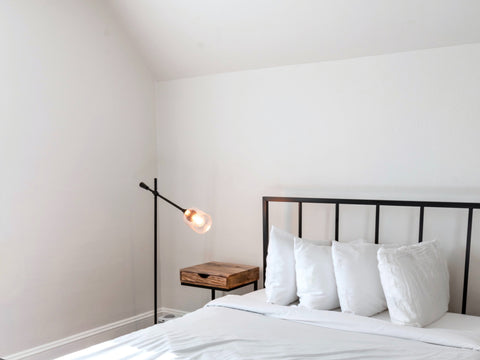A day in the life of a lot of people (myself included) looks like this: rise, dress, eat, work, eat, undress, and sleep. This is repeated for 5, or even 6, days a week. It truly is the most productive routine to create the most value. But while human beings are programmed to be productivity machines, we were not made to do this.
Everything that’s tangible or intangible has to have a quick response time because productivity is everything. We want to get answers as quickly as possible. This doesn’t leave us a lot of space to be present anymore. Thus, the introduction of slow living.
So, what is slow living?

In a nutshell, it is just to slow down and be present. We see a lot of this adjective manifesting in the food and fashion industries. People are opting for slow, locally grown produce as opposed to mass-produced foods, and people are generally being more mindful about their consumption. However, this adjective can also draw new practices in our daily routines.
Perhaps you have seen the idealistic TikTok videos of the slow living lifestyle and thought “this is not for me, and I am not that girl”. But slow living doesn’t have to look aspirational, it is understanding that the idea of “accomplishing as much as possible in one day” is unrealistic, and frankly unhealthy. It is also not an excuse to be unproductive. To live life slow takes effort and practice. You can still be highly productive while living slowly. There’s just more mindfulness present.
So, Whether you’re a busy student or someone who’s constantly hustling, small slow living practices can be integrated into your daily routines to help you be more present.
Consider adding some intentional moments to your day.
Schedule some time for yourself

This can come in the form of meditation, both moving and still. This doesn’t mean you have to sit still and manifest peace and harmony for 1 hour. As Mingyur Rinpoche explains, it is as simple as taking a moment and being aware. We often move through our days with absence, because we just need to get x tasks done. So, taking a step back and going for a walk and just being aware of the environment is meditation at its best.
Hobbies

Scheduling time for yourself can also mean finding hobbies. This can be something new, or something you have enjoyed in the past. You don’t necessarily have to be a professional at your hobbies either. That would move to a profession, rather than an interest. Your hobbies can just remain hobbies they do not have to be money-generating means to success. While there is an array of available hobbies to pick from, my personal favourite has to be plants. I wake up every morning, and rather than picking up my phone, I go downstairs and care for my plants. Whether it’s watering, fertilising, repotting, or just admiring them, it is something that helps me be more intentional in the mornings, as opposed to mindless scrolling right at the beginning of my day. Leading to my next point:
Devices

They are made to make our lives quicker/more efficient. Part of slow living is intentional action. So, it is important to turn them off, or switch it to “do not disturb”. A lot of mindless scrolling comes from procrastination, and just intentionally turning them off will help us refocus to be present.
Tasks

Finally, slow living practices can occur in everyday tasks too. I loathe the laundry sometimes, and I used to go onto Netflix while I’m folding laundry, which did not help me be present. After integrating slow living practices, I use this time now to unplug and let my mind run free. It is my time to daydream and think about my day and even aspirations.
Similar to other new practices, slow living doesn’t happen overnight. Good things in life take time; Rome wasn’t built in a day. As cheesy as these metaphors are, they are important reminders. So, take your time and slowly build up to these slow living practices.
From Waste to Resource
Our efforts and commitment to waste reduction and sustainability begin with our production process.
Plastic and agriculture wastes are repurposed and utilized through innovative transformation into a biodegradable composite material.

